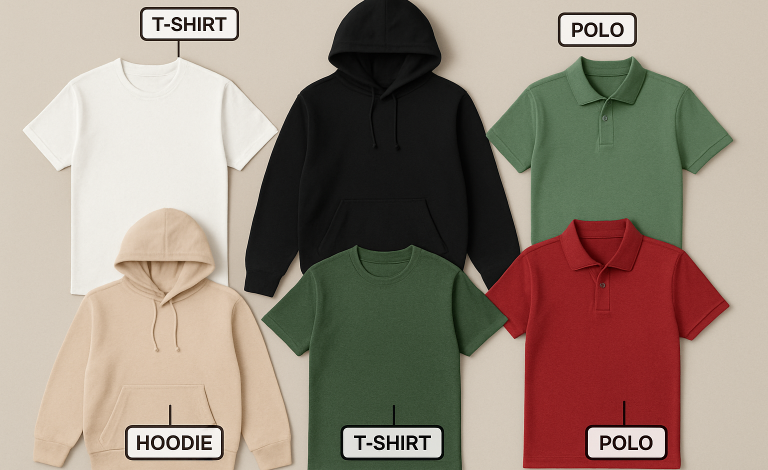How to Choose the Best Garments for Custom Printing

Custom printed apparel is a powerful way to promote your brand, foster team spirit, or mark special occasions. To ensure your designs stand out and your investment pays off, selecting the right garments is essential. The choice of fabric, style, and cut can significantly impact everything from comfort to print quality, so starting with a thoughtful approach is crucial. When you’re ready to move forward with custom printing, having a reliable partner for product sourcing can make all the difference in getting the right apparel for your needs.
Understanding the purpose behind your custom apparel project shapes every other decision, whether you’re supplying uniforms for a sports team or promotional T-shirts for an event. Evaluating who will wear the garments and where they’ll be worn streamlines your choices, maximizing the impact of your printed pieces.
Define the Purpose and Audience
The best garment choice starts by determining why you need custom apparel in the first place. Consider whether your garments will function as everyday wear, official uniforms, or limited-edition merchandise. The needs of your intended audience—such as employees, students, or event attendees—should also drive your selection process. For example, a concert crowd may appreciate bold, trendy shirts, while staff uniforms may require a more professional look, such as polos or button-down shirts. This clarity ensures every aspect, from style to print type, aligns with the garment’s role.
Choose the Right Fabric
Fabric selection is pivotal to the comfort, durability, printability, and feel of the finished product. Choices range from 100% combed ring-spun cotton, which offers excellent comfort and breathability, to blends like cotton-polyester that add wrinkle resistance and durability. Pure polyester garments are renowned for their moisture-wicking properties, making them ideal for sports and outdoor activities. According to the BBC, sustainable alternatives such as regenerative wool are gaining attention, offering eco-friendly options without compromising quality. The fabric must also be compatible with your chosen printing technique to achieve vibrant designs and long-lasting results.
Consider Weight and Thickness
The weight of the garment affects comfort, its draping, and the appearance of the print. Lightweight garments keep wearers cool and comfortable, making them perfect for layering. Heavier fabrics, on the other hand, are more insulating and durable. For printing, thinner materials may allow designs to look brighter but can risk transparency, while thicker garments require more ink and may impact the look and feel of the finished print.
See also: Business Account Features For Fast-Growing Businesses
Assess Printing Compatibility
Each printing technique works best with particular fabrics. Screen printing is known for its durability and is typically favored for use on cotton and blends. Direct-to-garment (DTG) printing captures intricate detail and vibrant color on 100% cotton. Heat transfer methods, while suitable for most textiles, excel in small batch orders and complex, multi-colored designs. Collaboration with your print service provider is vital to ensure the garments you select are the right match for your intended artwork.
Factor in Sizing and Fit
Inclusivity means offering a diverse range of sizing and fit options. Ill-fitting garments can undermine both the comfort and appeal of your custom apparel. It’s wise to review sizing charts specific to each brand and consider offering unisex, women’s, and men’s cuts. A wide selection ensures that everyone can find a comfortable and flattering option, boosting satisfaction and engagement with your project.
Pay Attention to Color Selection
The color palette you select sets the stage for your design. Classic neutrals, such as white, black, and heather gray, offer maximum versatility, ensuring printed designs stand out, while bold shades can excite and attract attention. According to Vogue, building a cohesive wardrobe similar to the principles behind a capsule wardrobe can guide your color choices, ensuring each garment pairs well with your design and overall brand visuals to maintain a coherent look.
Balance Cost and Quality
Budget considerations are always top of mind in apparel projects, but prioritizing quality creates a longer-lasting impression for recipients. Higher-quality garments resist shrinking, fading, and wear, maintaining your message and brand image for years. Striking the right balance between cost and durability will yield better results for both your budget and reputation.
Explore Sustainable and Ethical Options
Today’s consumers are increasingly aware of the environmental and social impact of their purchases. Opting for organic cotton, recycled fibers, or garments made with ethical labor practices can elevate your brand, highlighting a commitment to sustainability and social responsibility. Eco-friendly ink and dye processes further minimize environmental impact and can be a strong selling point for your audience.
By considering these key factors, you’ll be equipped to confidently select the best garments for your custom printing needs. With carefully sourced materials and a focus on quality, your custom apparel can deliver outstanding results that reflect your vision and values for years to come.




